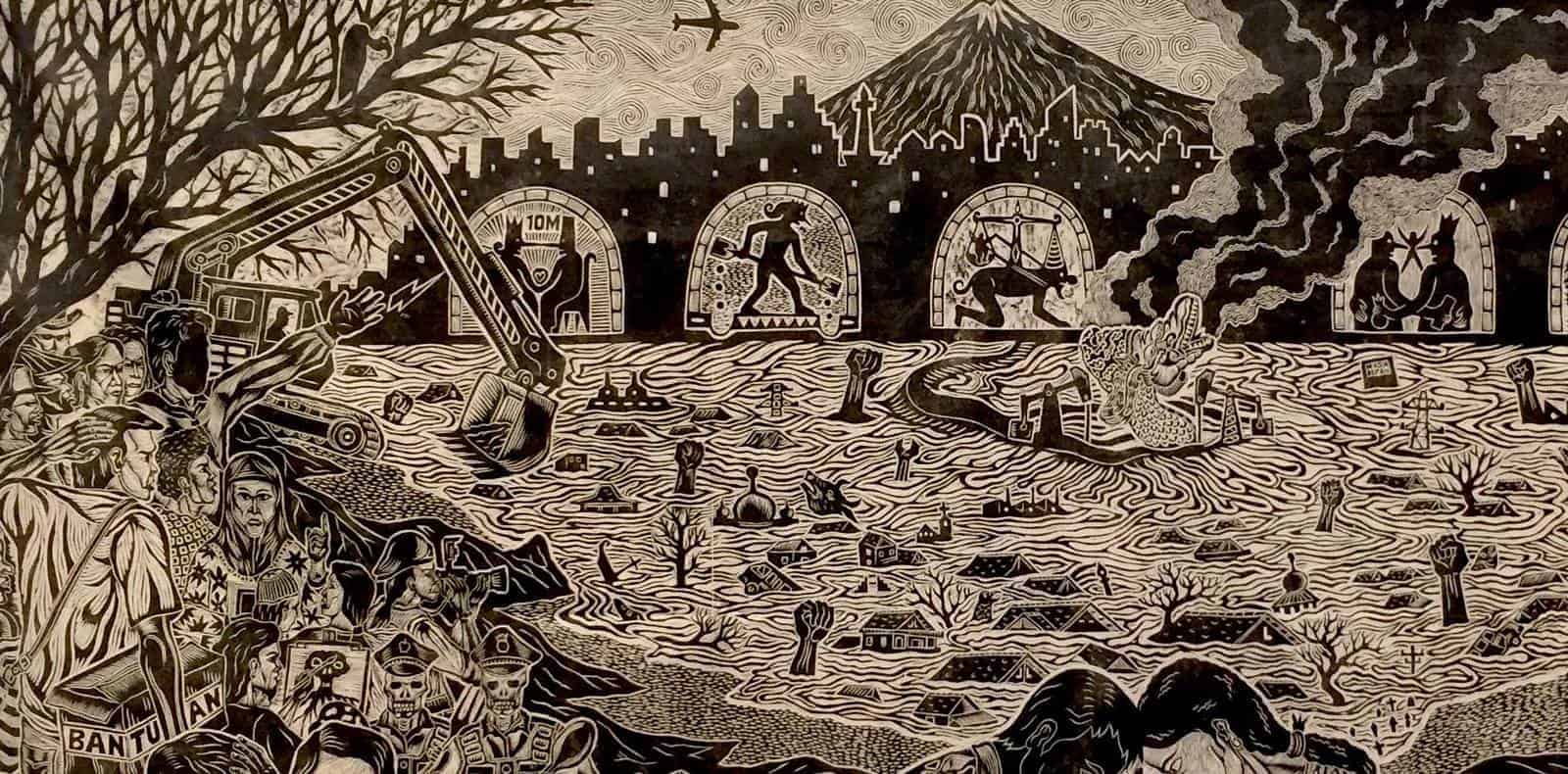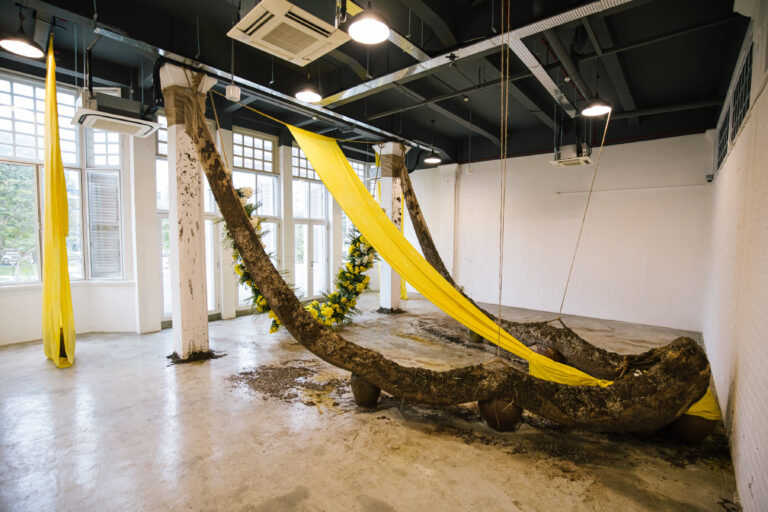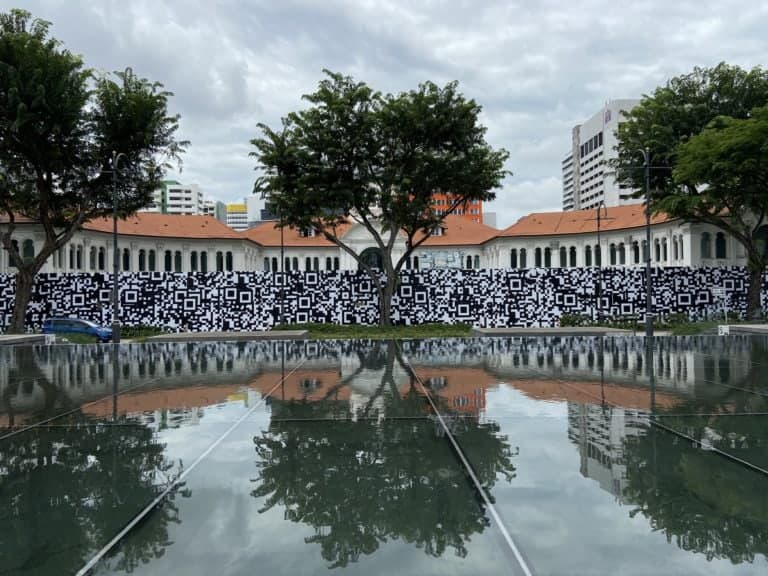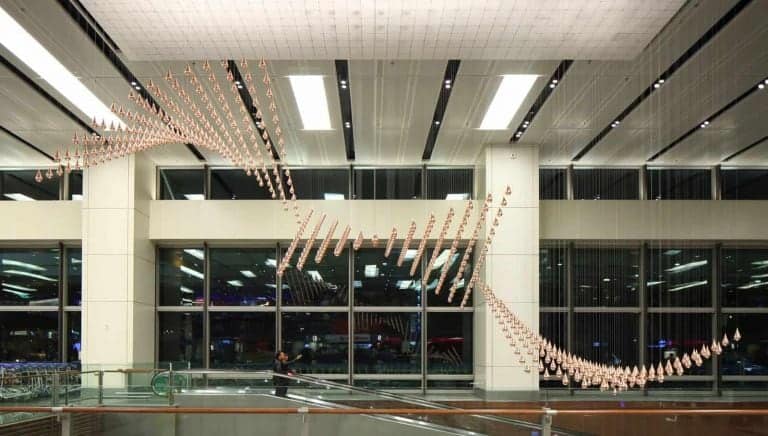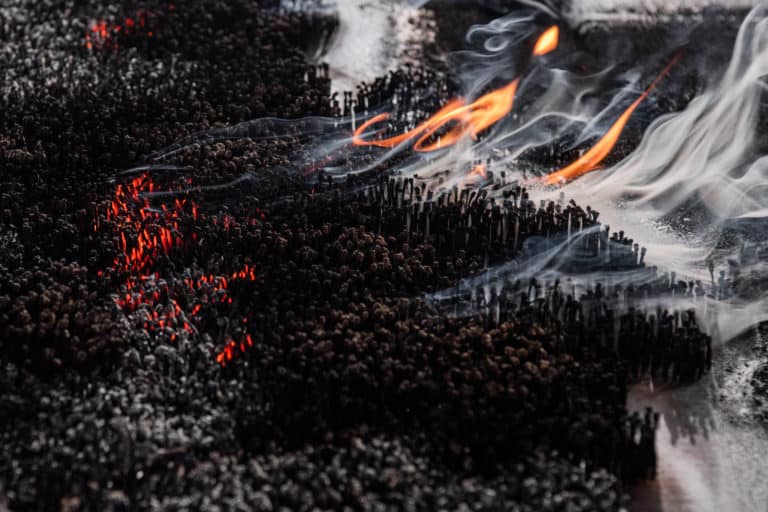“In-betweenness is a fundamental question of our times.”
The essence of this statement by scholar Homi Bhabha seems to pervade Fracture/Fiction at ILHAM Gallery, in the sense of how the exhibition brings together contemporary artworks through which artists explore what it means to live in a time of immense socio-political change that often puts them “in between”. From the charcoal drawings of everyday objects confiscated at airports by Shilpa Gupta, to the adaptation of a traditional Malaysian woven mat by Yee-I-Lann, this multifarious showing of 45 South Asian and Southeast Asian artists is one that generates a more inclusive discussion of our global and regional circumstances.
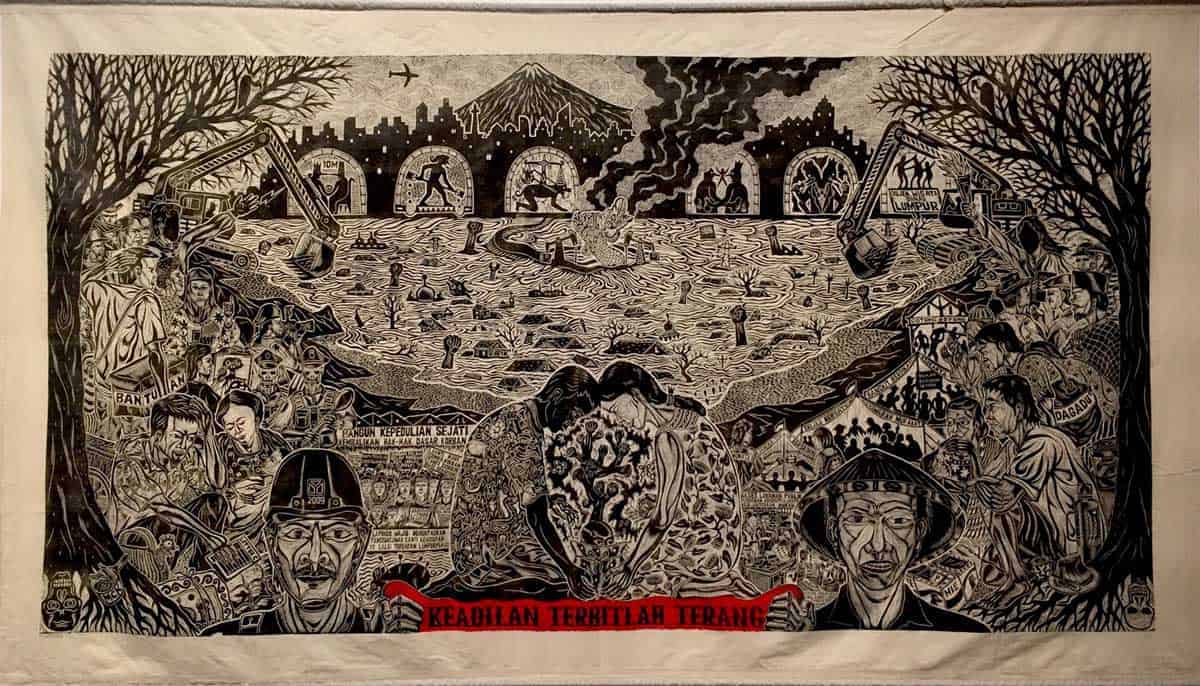
The work of artist Muhammad “Ucup” Yusuf does so particularly clearly. Ucup is a Yogyakarta-based woodcut artist whose works are known to be strongly political. Titled Tak Kunjung Padam (2009) – which translates to “never goes out” – his stark woodcut print presents a different perspective on the Sidoarjo Mud Flow, a disaster that has been plaguing Sidoarjo, East Java. Tak Kunjung Padam refers to a problem that never seems to be resolved, just as how the mud volcano in the Sidoarjo district has been spewing hot mud and gases since May 2006, and continues to do so even today. The mud has drowned 15 villages and wreaked devastation upon surrounding paddy fields, factories and schools. While the media has preferred to play up the endless disputes between the government and PT Lapindo Brantas, a private Indonesian oil and gas company whose reckless drilling is said to be responsible for the disaster, Ucup chooses instead to focus on the social impacts that the incident has had on the villagers.
His solidarity lies with the common people who find themselves trapped in an “in-between” state, where there seems to be no way out of this mess. This is evident when one examines the densely packed imagery of Tak Kunjung Padam. To begin with, the focalpoint of the work is of a couple, kneeling with their foreheads touching, with their baby nestled in their protective embrance. Clenched fists sprout from its head, branching out like a plant, as if this infant has many demands. It is a symbol that seems to ask: how might a society use its collective power to regain the rights of its people?
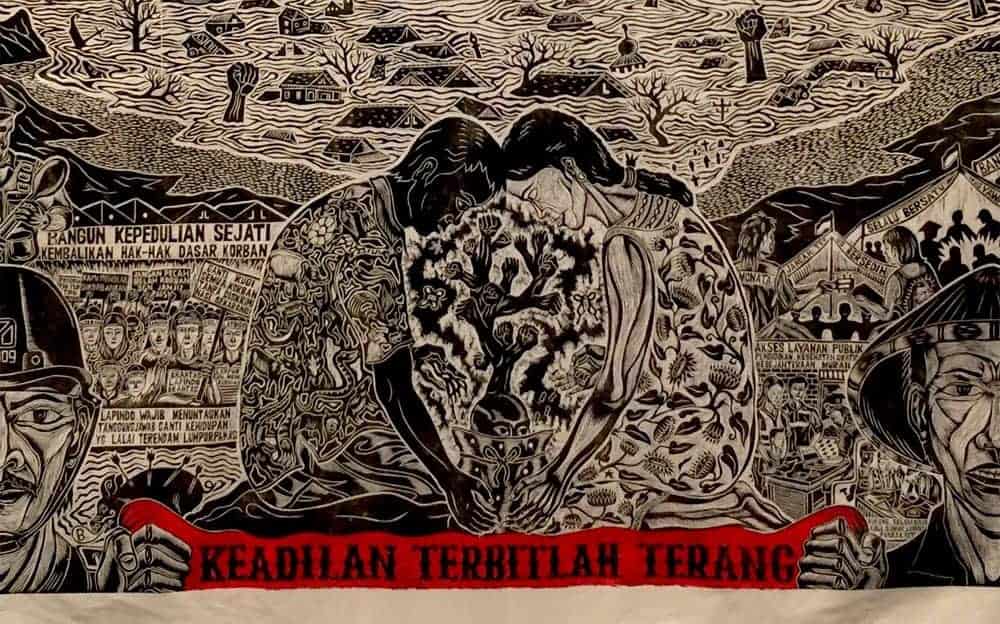
Beneath this focal image lies the slogan “Keadilan Terbitlah Terang”, which literally translates to “with justice, comes light”. It is highlighted in bold red, and stands out against the otherwise black and white picture plane. This slogan invites comparison to a collection of letters by Javanese heroine Raden Ajeng Kartini entitled “Habis Gelap, Terbitlah Terang” (Out of Darkness Comes Light). Published in 1911, Kartini had written the letters to persuade others into defending Indonesian women’s rights for education. Ucup similarly stresses the importance of standing up for our own rights as citizens of a country. He proclaimed that “the most important lesson learned by victims of the mud flow is about how to be united, in order to win over their rights again.”
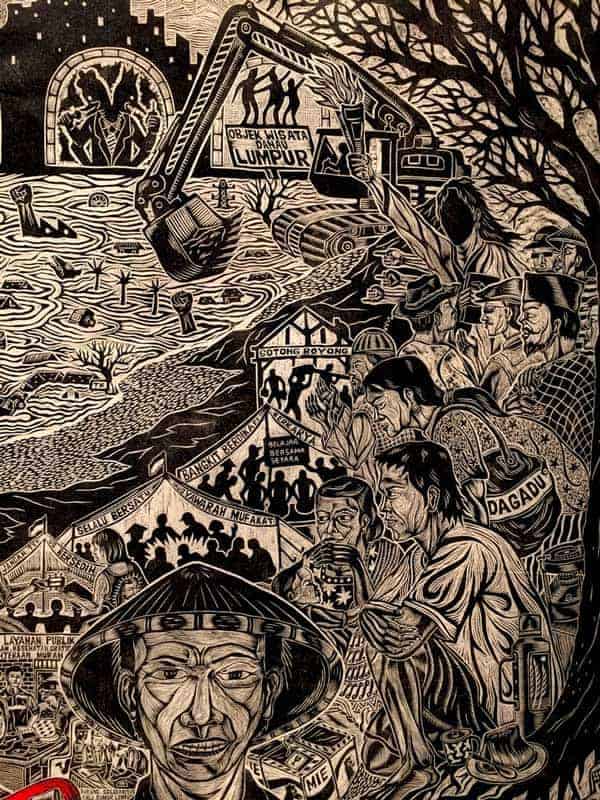
Given the artist’s strong beliefs in the need for unity, it is small wonder that his work contains clear messages that seek to reaffirm the villagers’ understanding of the notion of community. One only has to look on either side of the midground to see Ucup’s depictions of villagers gathering under their evacuation tents, accompanied by exhortations such as “Gotong royong” (Work together), “Bangkit berdikari” (Rise and stand on one’s own feet), “Berkarya” (Create), “Selalu bersatu” (Always unite), and “Musyawarah mufakat” (Democratic decision-making). To the artist, these principles of unity and independence are qualities that people of every society require in order to survive and progress.
In juxtaposition to the many uplifting slogans, the work is also rife with menacing details, such as the devil-like figures under Mount Penanggungan. One digs the soil using a spade, whilst others discreetly exchange wealth behind another person’s back. These are Ucup’s portrayals of the corruption that plagues mining activities across the country, which he affirms is “a threat” to the nation. What can the people look to for protection?
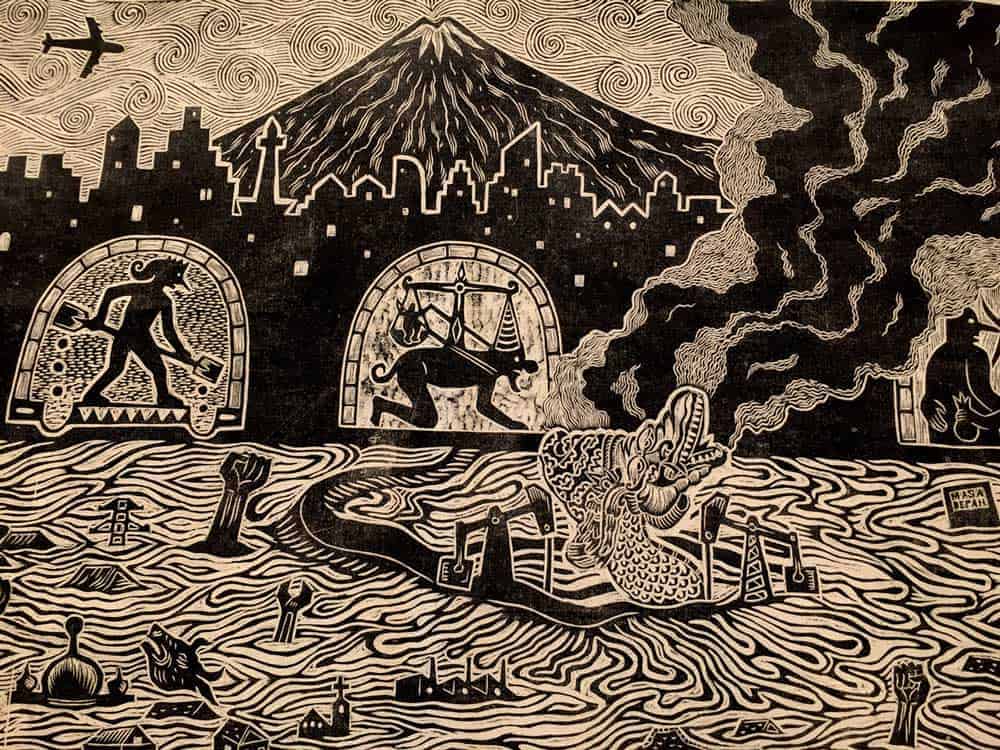
A mythical creature appears in the middle of the mud flood in the background. Ucup explains that “the dragon is a symbol of God in Java; the protector of our ring of fire.” In this image however, the dragon seems to be on a losing end of a tussle with machinery. Given such dire circumstances, do the people have any hope of prevailing? The artist believes in a light that never goes out, and perhaps it is in the gaps of the “in-between” where light might shine ever brighter.
